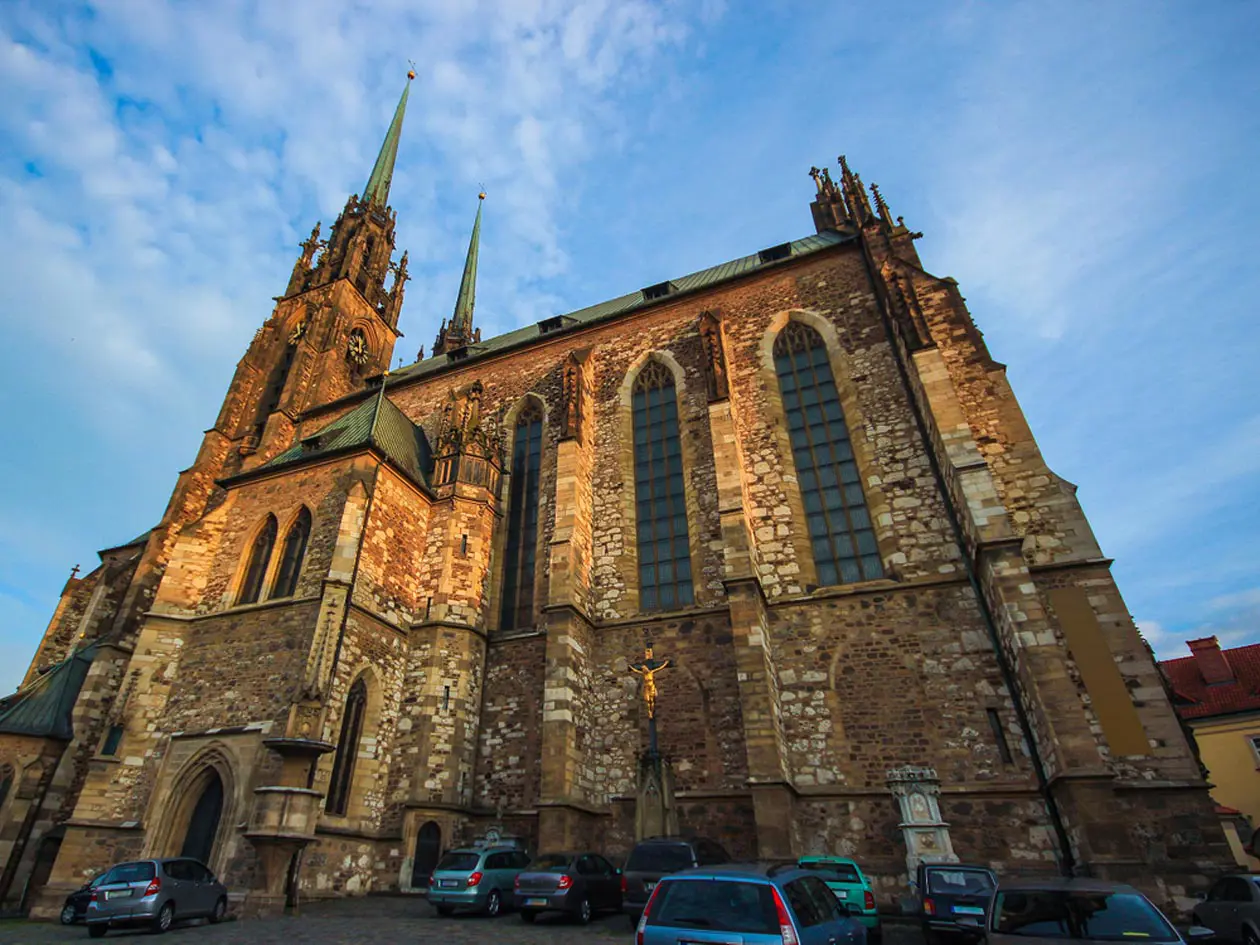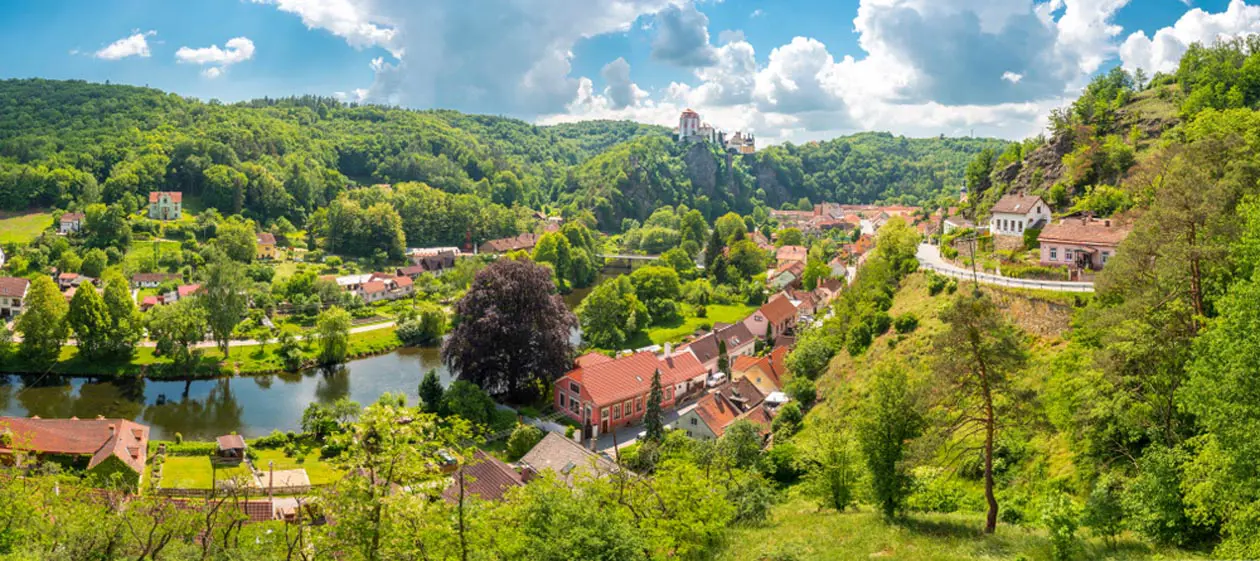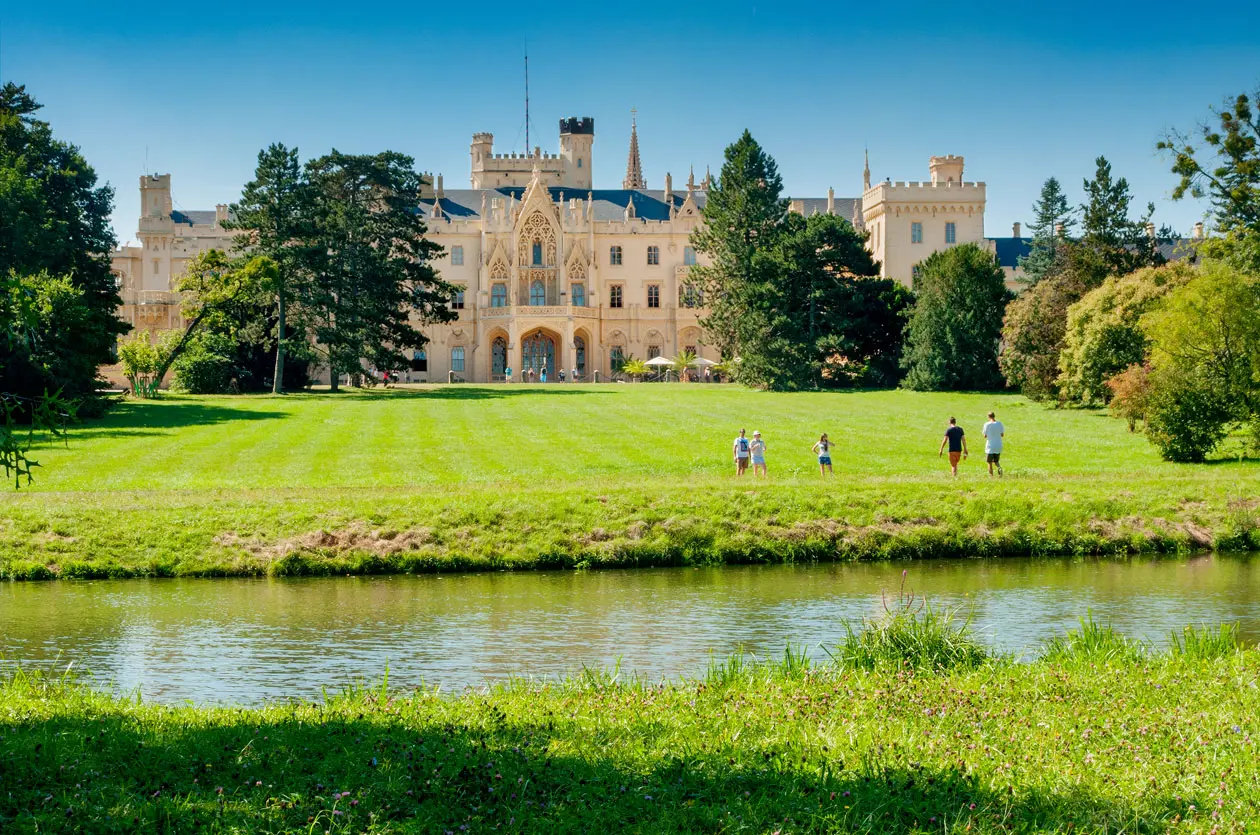Brno and the beauty of Moravia
The second city in the Czech Republic in terms of importance and also metropolis of Moravia, Brno is dominated by Špilberk Castle, a well preserved Gothic building with two chapels. The castle was rebuilt as Baroque fort and finally, in the nineteenth century, it became a prison for political prisoners - the “prison of the nations” - which housed Italian patriots such as Silvio Pellico and Piero Maroncelli.
The Cathedral of Brno
The Gothic Cathedral of Saints Peter and Paul sits on the top of Petrov hill, on the site where Brno Castle once stood between the eleventh and twelfth centuries. Dating back to the thirteenth century, the cathedral was rebuilt in Baroque style between the years 1743–1746.

Its current appearance dates back to the nineteen and twentieth centuries. Since 1777 the cathedral has been the seat of the bishop of Brno. Its twelfth-century century crypt has recently been opened to the public.
The historic center of Brno
The historic centre gravitates around Freedom Square, from where the major roads radiate across the city of Brno. The square is overlooked by the Schwarz Palace and the curious House of the Four Mamlases, four figures that support the building. In another square, known as the “Cabbage Market” stands the Baroque Parnas fountain from which carp were once fished and sold.

Brno has numerous historical buildings: the monastery of the ecclesiastical orders, the Episcopal Court, the Renaissance palaces of the Lords of Lipé and Kunštát, the Church of St. Jakob (James), the Hausper’s Palace – the seat of the Husa na Provázku (Goose on a string) Theatre.
The modern 19th century architecture in Brno
But Brno has also become a major centre of modern architecture. Two extraordinary buildings date back to the late nineteenth century, the Klein Palace and the Mahen Theatre.

Villa Thugendhat
Important Art Nouveau buildings include Villa Thugendhat, which is famous throughout Europe. This gem of functionalist architecture was named after the owner of Brno’s textile factory, Fritzi Tugendhat, who built it for his family in the period between the two world wars.

The house, which features a series of large glass windows, was designed by the celebrated German architect Ludwig Mies van der Rohe and built on the hills above Brno. The buildings of Brno Trade Fair complex, built between the thirties and sixties, also date back to this same period.
The south Moravian metropolis offers attractions even outside the city centre, such as the zoo, botanical gardens, large public parks and for motorbike enthusiasts, the Brno race track with the Masaryk circuit, where world championship motorbike races are held.
The region of South Moravia

The region of South Moravia
The region of South Moravia offers countryside, ancient monuments, excellent local wine and folklore traditions. The area has numerous attractions, including the Podyjí Nature Reserve, with the numerous meanders of the River Dyje and rocky slopes covered with woodland, and the region known as “Moravian Beauty” (Moravský Kras) with its wonderful caves, Macocha gorge and underground River Punkva. Not far from Brno is the famous battlefield of Slavkov (Austerlitz) where three emperors clashed: Napoleon, the Russian emperor Alexander I and the Austrian emperor Franz II.
South Moravia is an area of famous vineyards and wine. Almost 96% of the Czech Republic’s wine production takes place here. The wine is best enjoyed in local wineries while listening to folk melodies accompanied by the sound of the cymbal. The most distinctive feature of South Moravia are its folk traditions, cheerful costumes, songs, dances and crafts.

Visitors interested in sport can make use of the area’s many cycle paths and guided tours. Golf lovers can use the two 18-hole courses in Slavkov and Kořence, and the 27-hole course in Jinačovice. After sport, relaxation is assured in the opened spa resort in Lednice and restored spa in Hodonín.

The traditional Czech cuisine
The recipes of Czech cuisine have as main course pork or beef, accompanied by boiled potatoes and rice. The dishes to taste are the Pecena Kachna (roast duck, bacon and sauerkraut) the Goulash with gnocchi (meat stew and dumplings), the Vepro knedlo zelo (pork, dumplings and sauerkraut) the Veprovy rizek (breaded pork cutlet and fried) Svickova na Smetane (beef fillet in sauce, carrots, whipped cream and blueberries).
Text by Luca Lembi
Updated by Nicolò Villa
Avion Tourism Magazine
All rights reserved.
Tourism Board
www.czechtourism.com
Partnership with Booking.com
Where to sleep in Brno

Brno is a welcoming city and offers different possibilities for accommodation.
To find the ideal hotel and the best offers you can do a search for the stars but also for districts or landmarks.
DISTRICTS
Hotels in the districts
LANDMARKS
Hotels in tourist areas
WHERE TO GO in Brno
Monuments, museums, excursions and tours in Brno

CATHEDRAL OF SAINTS PETER AND PAUL
The Cathedral sits on Petrov Hill and offers a beautiful view. Once a small Romanesque Basilica and later rebuilt in the Gothic style, the current cathedral was constructed in 1777. The cathedral building, the two tall towers and the Romanesque-Gothic crypt are open to the public. Located nearby are the Diocesan Museum and the Church of Saint James. The Church features a 94-metre tall tower and ossuary, the second largest in Europe after the catacombs of Paris.

BAROQUE PARNAS FOUNTAIN
The Baroque Parnas Fountain by Johann Bernhard Fischer von Erlach stands in a square known as the Vegetable Market and was built in the late seventeenth century. It depicts a cave with Hercules at its centre holding the three-headed dog Cerberus and other allegorical and mythical animals, while at the top sits a statue symbolising Europe. Nearby is the Cathedral of Saints Peter and Paul and, under the Vegetable or Cabbage Market, the city’s underground passages.

VILLA TUGENDHAT
The Tugendhat Villa, designed by the architect Ludwig Mies van der Rohe, is a UNESCO World Heritage Site. It dates back to the late 1920s and is a pioneering example of modern architecture: it features a system similar to today’s air conditioning, hot air heating, photocell light motion sensor at the entrance, electrical control of the windows and a wall made of onyx. It was commissioned by the couple Grete and Fritz Tugendhat and is located in the Černá Pole district of Brno.

SPILBERK CASTLE
Spilberk Castle in Brno was built in the mid thirteenth century by the King of Bohemia Přemysl Otakar II. Originally a Gothic castle, in the seventeenth century it became a Baroque fortress and in the eighteenth century, a prison and place of torture. Several high-ranking military personalities were held there, including leading Austrian commanders Bonneval and Wallis, the infamous Franz Trenck, colonel of the Pandours, and the poet Silvio Pellico who wrote “Le mie prigioni” (My Prisons) there. Today it houses the Brno City Museum and cultural events.

BRNO OLD TOWN HALL
On display in Brno Old Town Hall are some of the symbols of the city: a dragon (in reality a crocodile) and an ancient wheel. The building is entered through a late Gothic portal set in a central 63-metre tower, which is the work of the architect Anton Pilgram and can be climbed to the top. The courtyard and Renaissance arches were built by Italian architects in the late sixteenth century. Subsequent renovations date back to the Baroque period. The Town Hall houses an art gallery and various rooms of historical interest.

MORAVIAN MUSEUM
Brno’s Moravian Museum dates back to 1817 and is the ideal place for enthusiasts of zoology, botany, anthropology, archaeology, coins, music and literature. The Anthropos Pavilion hosts an interesting permanent exhibition on prehistoric life and includes a life-size model of a mammoth. It also features the study of the composer Leoš Janáček, detailed information on the “Teacher of Nations” Jan Amos Komenský (Comenius) and on research carried out by Mendel in the field of genetics.
Partnership with GetYourGuide
Tours and excursions
You might be interested in
Other destinations
Airports nearby Brno

















